Being that this will be the first event of it's kind: one portraying Texans on the frontier and not in the Eastern theatres of the war, I thought it would be pertinent to post some period photos and descriptions of the Texians guarding the frontier.
"Their dress consisted simply of flannel shirts, very ancient trousers, jack boots with enormous spurs, and black felt hats ornamented with the "lone star of Texas .' They looked rough and dirty......" Lt. Col Arthur Freemantle, crossing over from Matamoras, Mexico.
"They were a mixed class with very little good in the mixture.....The masses of them wore spurs on their heels, generally the immense wheel-spur, and though they were not born with them on, yet they might as well have been, for they not only rode in them, but walked in them, ate in them, and slept in them. Their clanking as they walked was like a man in chains. They wore belts around the waist, suspending one or two revolvers and a bowie knif,e were experts in the saddle, a had a reckless dare-(d)evil look, and were always ready for whiskey and a big chew of tobacco, and the handwriting of passion and appetite was all over them. They were cow-boys from the wild woods and prairies , and sons of the low class planters, with a strong sprinkling of the low white trash clay eaters, so plentiful in the Atlantic Southern States." Thomas North, "Five Years in Texas", published in 1871.
"They carried no tents, and seldom employed baggage-wagons. Where they were to make a long camp, they usually built log huts, otherwise, lay, rolled in their blankets, wherever they pleased, within the lines of their sentinels............They dressed as they chose, generally in flannel shirts and felt hats, sometimes in buckskin suits.......There are probably in Texas about as many (Colt navy) revolvers as male adults, and I doubt if there are one hundred in the state of any other make." Frederick Law Olmsted describing Texas ranging companies and the commonality of revolvers amongst the civilian population. Although this was published in 1857, based on his writings in 1852-3, his description of the ranging companies held fast through the turn of the decade. Many of the men in McCulloch's 1st Texas Mtd. Rifles had experience in these ranging companies.
These descriptions put forth a basic guideline for those attending as Texians: Flannel overshirts, well worn pants, felt hats, several revolvers and a belt knife strapped around their waist. Pretty straight forward.
Below are some images of Texans on the frontier, as well as a couple of lithographs that illustrated the men in the field pretty accurately.
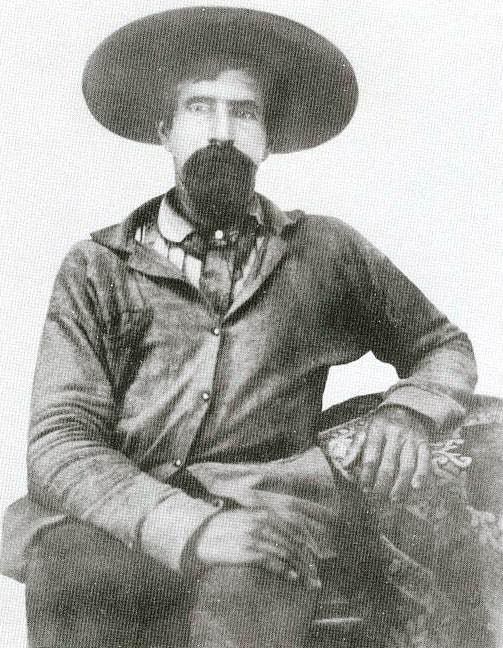
Big Foot Wallace, he should need no introduction.
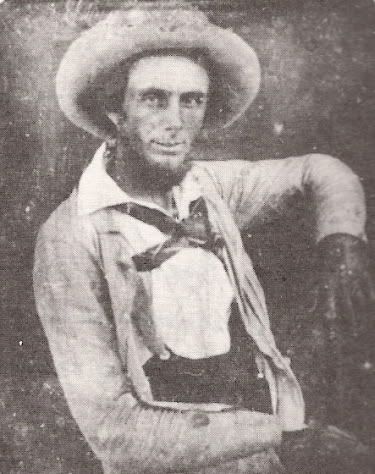
Buck Barry, celebrated frontiersman. Led ranging companies that captured Camp Cooper and commanded the 2nd District of Texas State Troops.
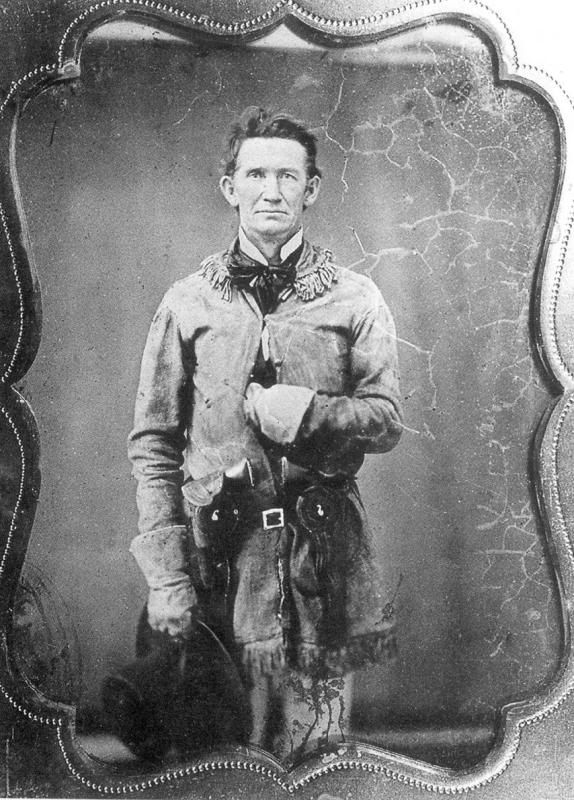
RIP Ford, showing his typical ranging dress. He upgraded from these buckskins for a broadcloth frock coat for the Invasion of New Mexico. If you notice on his belt he has a Colt dragoon and navy. Navy's were noted as being the most common revolver encountered in Texas by Olmsted as early as 1852/3. He mentions every man having at least one strapped around his waist.
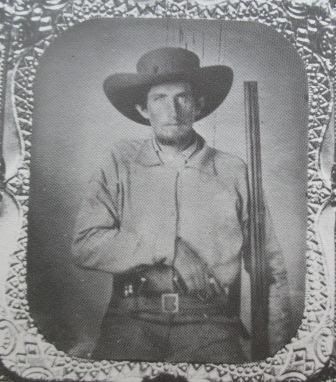
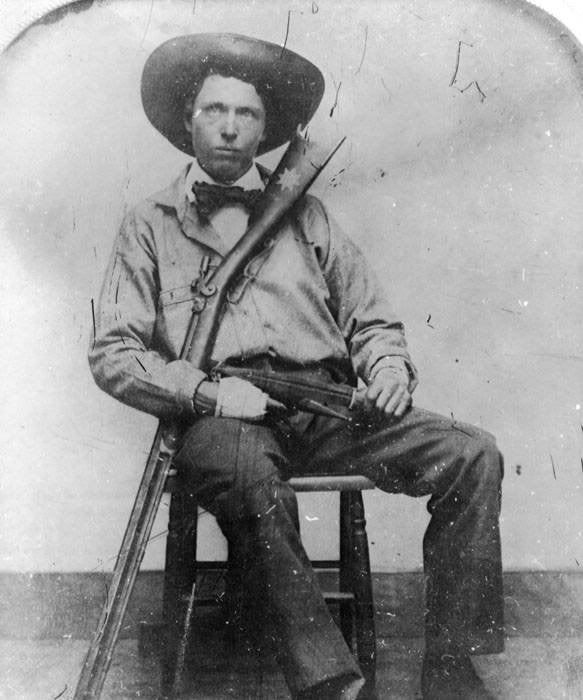
I don't recall where I came across these two images, but they illustrate the descriptions above.
These next three are first hand illustrated accounts of the Texians on the frontier.
The first is of the Texans being resupplied by the United States Quartermaster Dept. at Las Moras Creek near Fort Clark at Brackettville, Texas. Originally published in Harper's Weekly.
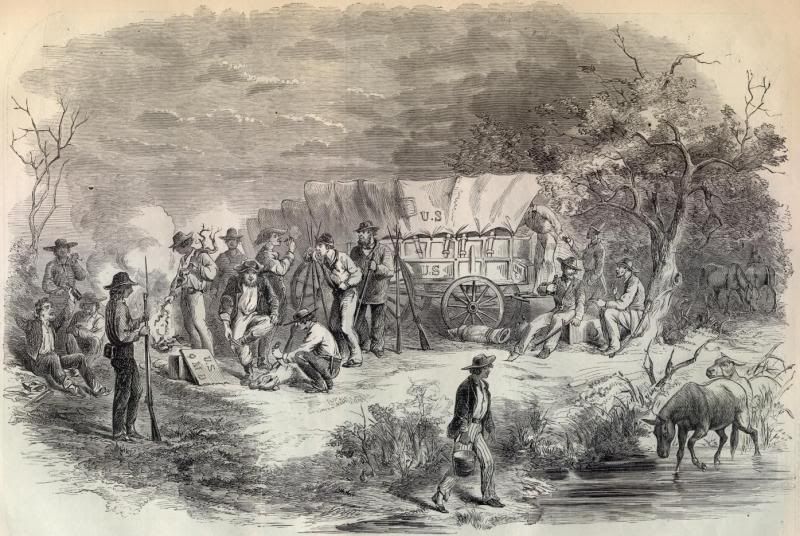
These next two were drawn by Morgan Wolfe Merrick in 1861 when they were between San Antonio and Fort Davis.
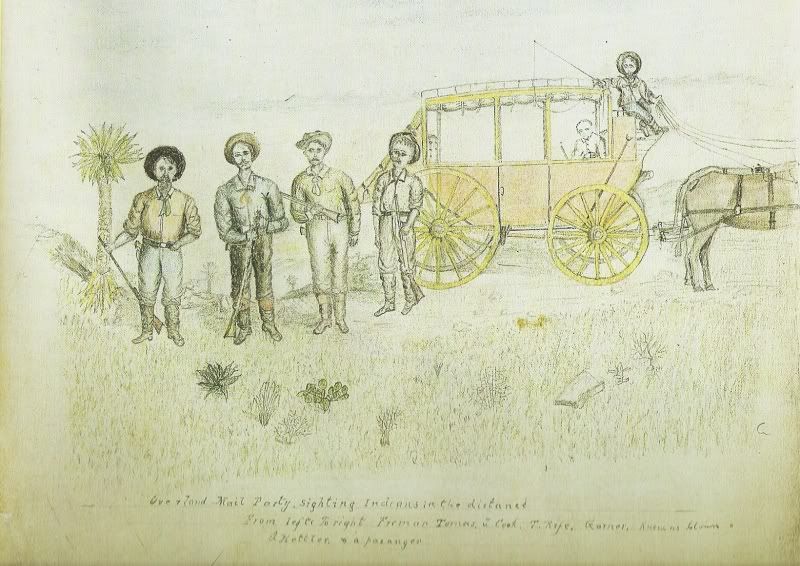
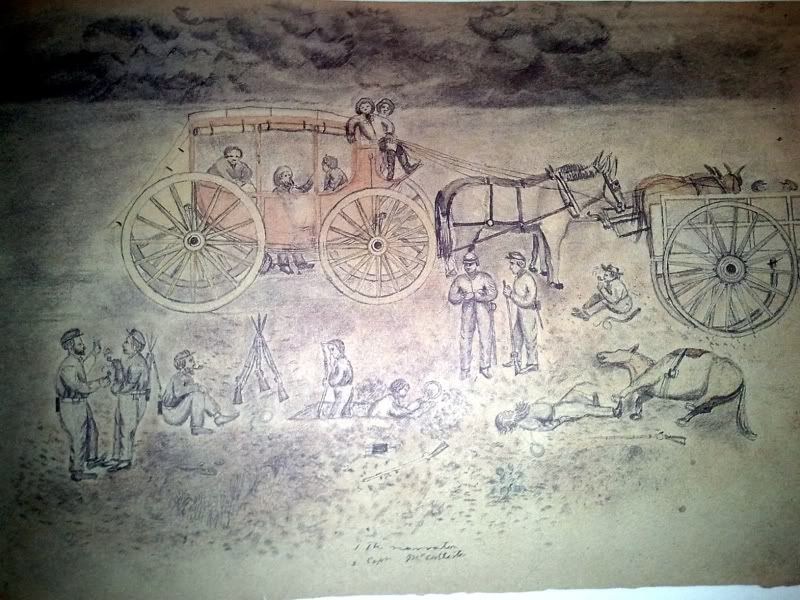
"Their dress consisted simply of flannel shirts, very ancient trousers, jack boots with enormous spurs, and black felt hats ornamented with the "lone star of Texas .' They looked rough and dirty......" Lt. Col Arthur Freemantle, crossing over from Matamoras, Mexico.
"They were a mixed class with very little good in the mixture.....The masses of them wore spurs on their heels, generally the immense wheel-spur, and though they were not born with them on, yet they might as well have been, for they not only rode in them, but walked in them, ate in them, and slept in them. Their clanking as they walked was like a man in chains. They wore belts around the waist, suspending one or two revolvers and a bowie knif,e were experts in the saddle, a had a reckless dare-(d)evil look, and were always ready for whiskey and a big chew of tobacco, and the handwriting of passion and appetite was all over them. They were cow-boys from the wild woods and prairies , and sons of the low class planters, with a strong sprinkling of the low white trash clay eaters, so plentiful in the Atlantic Southern States." Thomas North, "Five Years in Texas", published in 1871.
"They carried no tents, and seldom employed baggage-wagons. Where they were to make a long camp, they usually built log huts, otherwise, lay, rolled in their blankets, wherever they pleased, within the lines of their sentinels............They dressed as they chose, generally in flannel shirts and felt hats, sometimes in buckskin suits.......There are probably in Texas about as many (Colt navy) revolvers as male adults, and I doubt if there are one hundred in the state of any other make." Frederick Law Olmsted describing Texas ranging companies and the commonality of revolvers amongst the civilian population. Although this was published in 1857, based on his writings in 1852-3, his description of the ranging companies held fast through the turn of the decade. Many of the men in McCulloch's 1st Texas Mtd. Rifles had experience in these ranging companies.
These descriptions put forth a basic guideline for those attending as Texians: Flannel overshirts, well worn pants, felt hats, several revolvers and a belt knife strapped around their waist. Pretty straight forward.
Below are some images of Texans on the frontier, as well as a couple of lithographs that illustrated the men in the field pretty accurately.

Big Foot Wallace, he should need no introduction.

Buck Barry, celebrated frontiersman. Led ranging companies that captured Camp Cooper and commanded the 2nd District of Texas State Troops.

RIP Ford, showing his typical ranging dress. He upgraded from these buckskins for a broadcloth frock coat for the Invasion of New Mexico. If you notice on his belt he has a Colt dragoon and navy. Navy's were noted as being the most common revolver encountered in Texas by Olmsted as early as 1852/3. He mentions every man having at least one strapped around his waist.


I don't recall where I came across these two images, but they illustrate the descriptions above.
These next three are first hand illustrated accounts of the Texians on the frontier.
The first is of the Texans being resupplied by the United States Quartermaster Dept. at Las Moras Creek near Fort Clark at Brackettville, Texas. Originally published in Harper's Weekly.

These next two were drawn by Morgan Wolfe Merrick in 1861 when they were between San Antonio and Fort Davis.








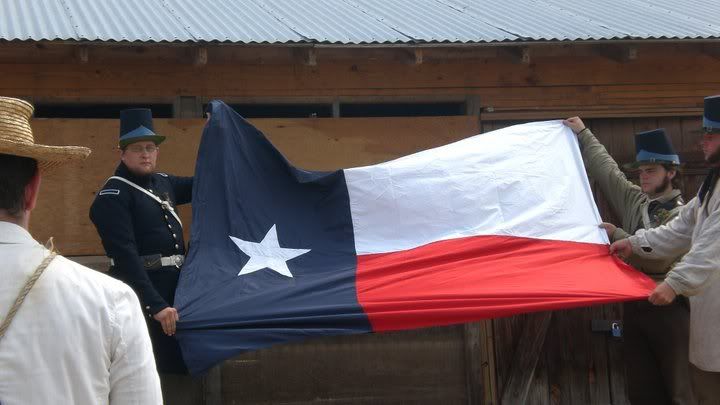
Comment